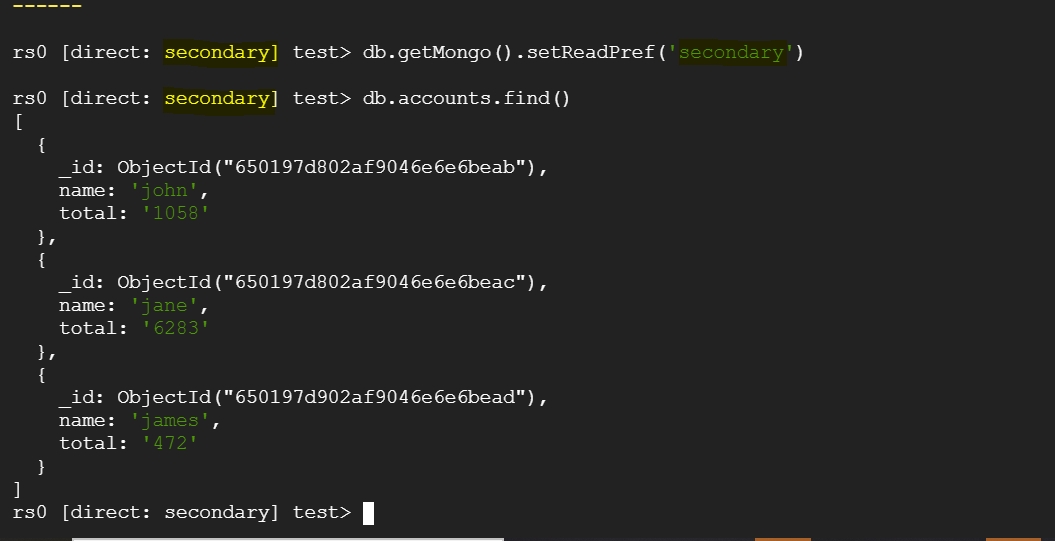Backup from cStor
This website/page will be End-of-life (EOL) after 31 August 2024. We recommend you to visit OpenEBS Documentation for the latest Mayastor documentation (v2.6 and above).
Mayastor is now also referred to as OpenEBS Replicated PV Mayastor.
Step 1: Backup from cStor Cluster
Currently, we have a cStor cluster as the source, with a clustered MongoDB running as a StatefulSet using cStor volumes.
kubectl get podsNAME READY STATUS RESTARTS AGE
mongo-client-758ddd54cc-h2gwl 1/1 Running 0 47m
mongod-0 1/1 Running 0 47m
mongod-1 1/1 Running 0 44m
mongod-2 1/1 Running 0 42m
ycsb-775fc86c4b-kj5vv 1/1 Running 0 47mkubectl get pvcNAME STATUS VOLUME CAPACITY ACCESS MODES STORAGECLASS AGE
mongodb-persistent-storage-claim-mongod-0 Bound pvc-cb115a0b-07f4-4912-b686-e160e8a0690d 3Gi RWO cstor-csi-disk 54m
mongodb-persistent-storage-claim-mongod-1 Bound pvc-c9214764-7670-4cda-87e3-82f0bc59d8c7 3Gi RWO cstor-csi-disk 52m
mongodb-persistent-storage-claim-mongod-2 Bound pvc-fc1f7ed7-d99e-40c7-a9b7-8d6244403a3e 3Gi RWO cstor-csi-disk 50mkubectl get cvc -n openebsNAME CAPACITY STATUS AGE
pvc-c9214764-7670-4cda-87e3-82f0bc59d8c7 3Gi Bound 53m
pvc-cb115a0b-07f4-4912-b686-e160e8a0690d 3Gi Bound 55m
pvc-fc1f7ed7-d99e-40c7-a9b7-8d6244403a3e 3Gi Bound 50mStep 2: Install Velero
Run the following command to install Velero:
velero install --use-node-agent --provider gcp --plugins velero/velero-plugin-for-gcp:v1.6.0 --bucket velero-backup-datacore --secret-file ./credentials-velero --uploader-type restic[Installation progress output]Verify the Velero namespace for Node Agent and Velero pods:
kubectl get pods -n veleroNAME READY STATUS RESTARTS AGE
node-agent-cwkrn 1/1 Running 0 43s
node-agent-qg6hd 1/1 Running 0 43s
node-agent-v6xbk 1/1 Running 0 43s
velero-56c45f5c64-4hzn7 1/1 Running 0 43sStep 3: Data Validation
On the Primary Database (mongo-0) you can see some sample data.

You can also see the data available on the replicated secondary databases.

Step 4: Take Velero Backup
MongoDB uses replication, and data partitioning (sharding) for high availability and scalability. Taking a backup of the primary database is enough as the data gets replicated to the secondary databases. Restoring both primary and secondary at the same time can cause data corruption.
For reference: MongoDB Backup and Restore Error Using Velero
Velero supports two approaches for discovering pod volumes to be backed up using FSB:
Opt-in approach: Annotate pods containing volumes to be backed up.
Opt-out approach: Backup all pod volumes with the ability to opt-out specific volumes.
Opt-In for Primary MongoDB Pod:
To ensure that our primary MongoDB pod, which receives writes and replicates data to secondary pods, is included in the backup, we need to annotate it as follows:
Opt-Out for Secondary MongoDB Pods and PVCs:
To exclude secondary MongoDB pods and their associated Persistent Volume Claims (PVCs) from the backup, we can label them as follows:
Backup Execution:
Create a backup of the entire namespace. If any other applications run in the same namespace as MongoDB, we can exclude them from the backup using labels or flags from the Velero CLI:
Backup Verification:
To check the status of the backup using the Velero CLI, you can use the following command. If the backup fails for any reason, you can inspect the logs with the velero backup logs command:
Last updated
Was this helpful?